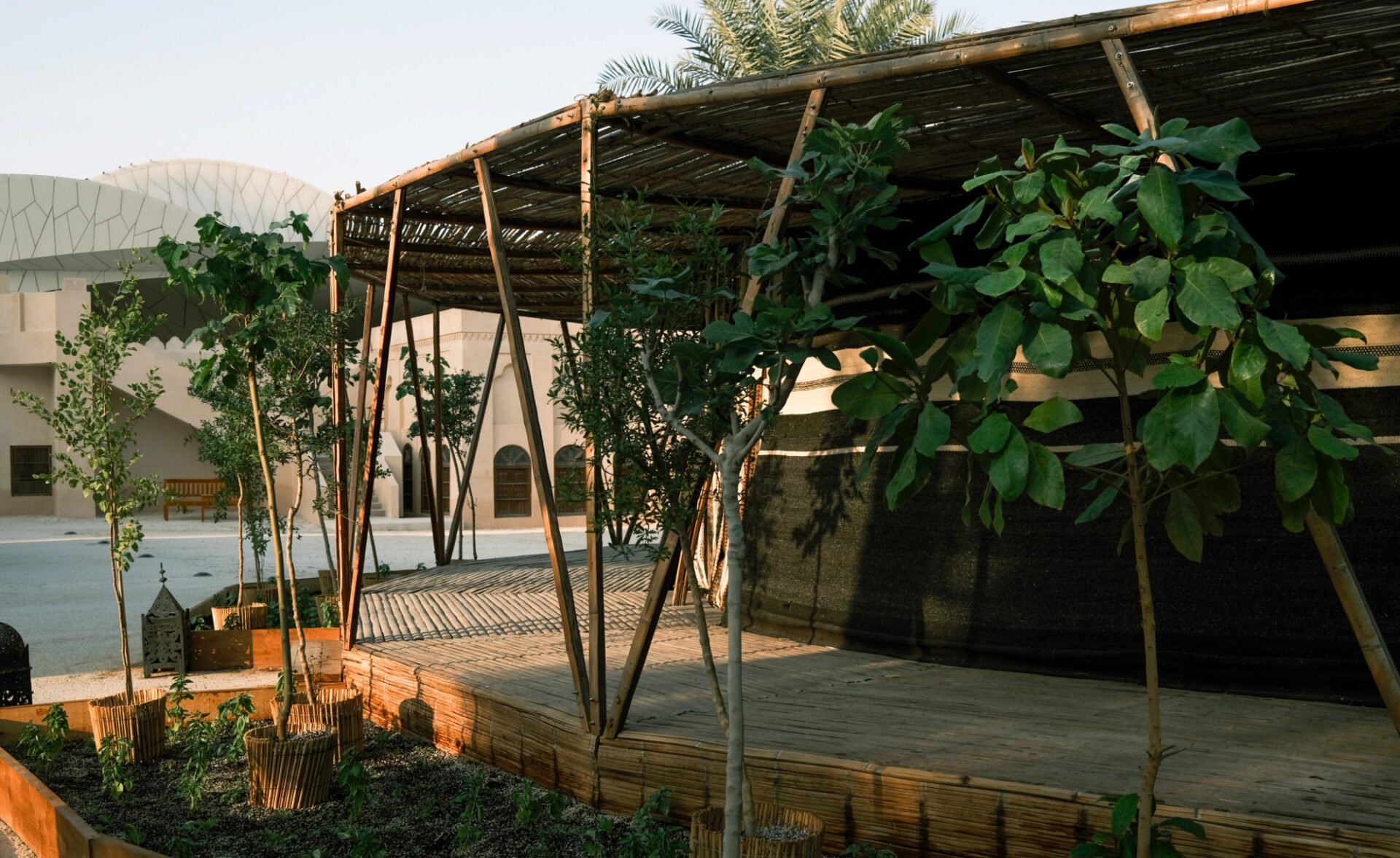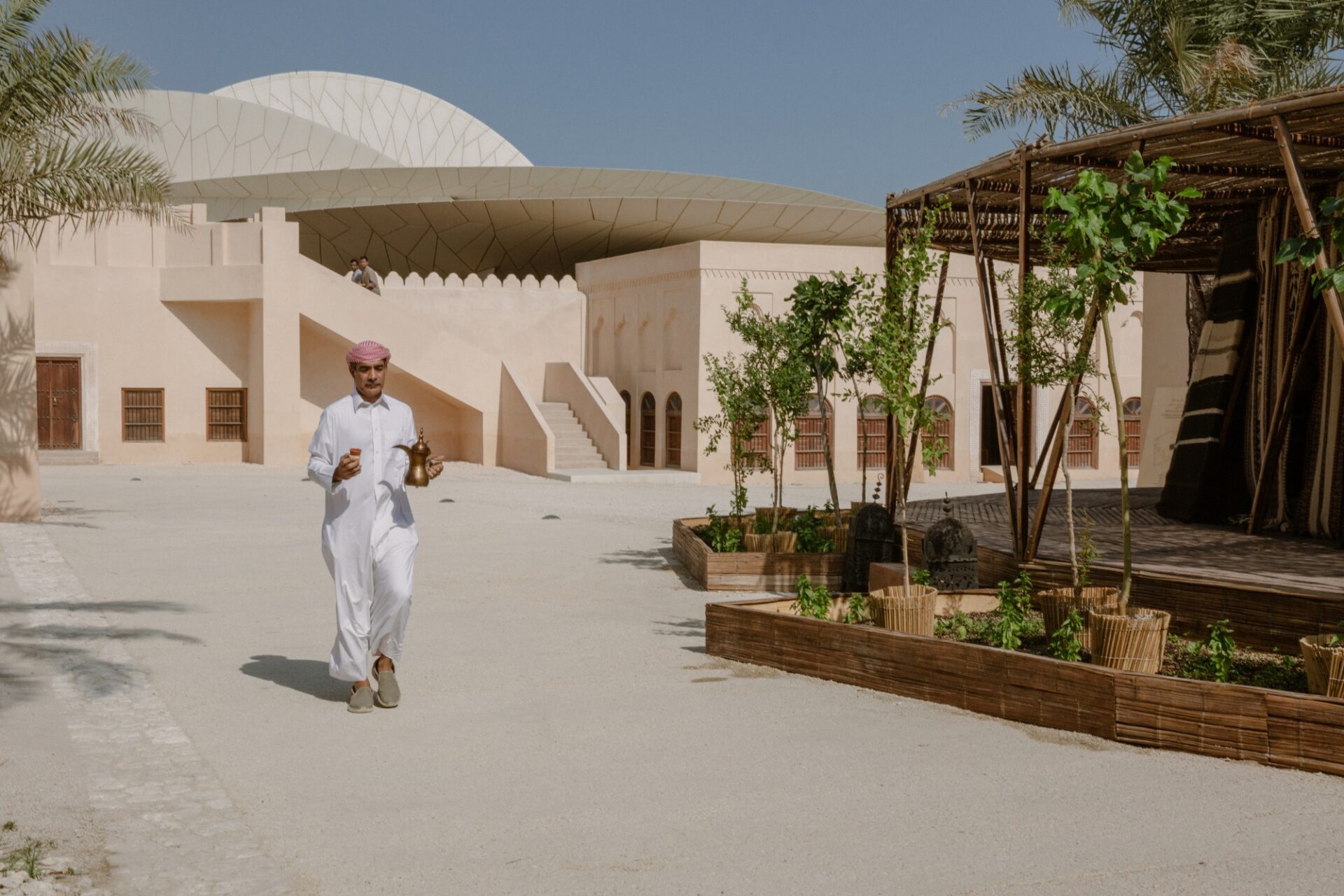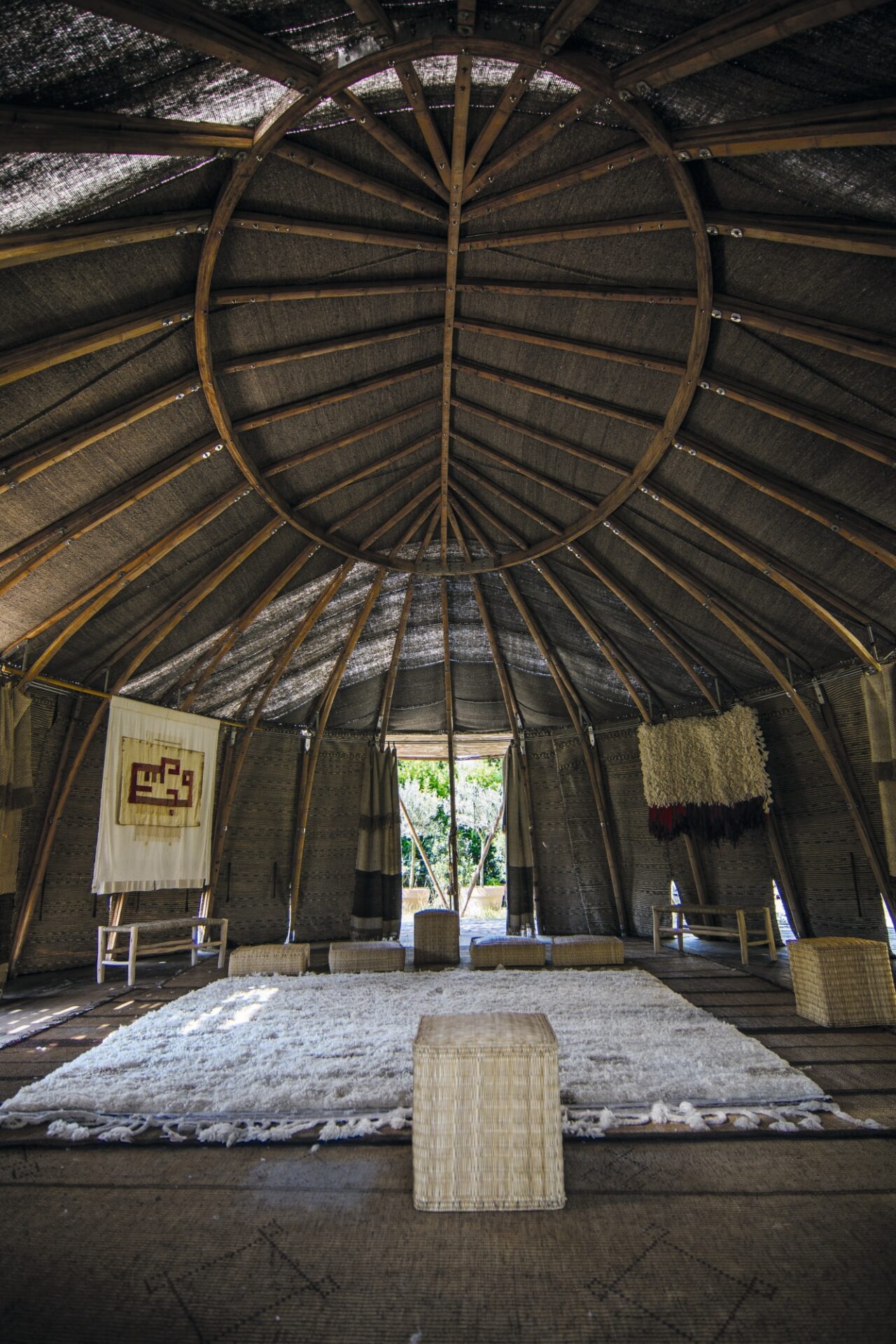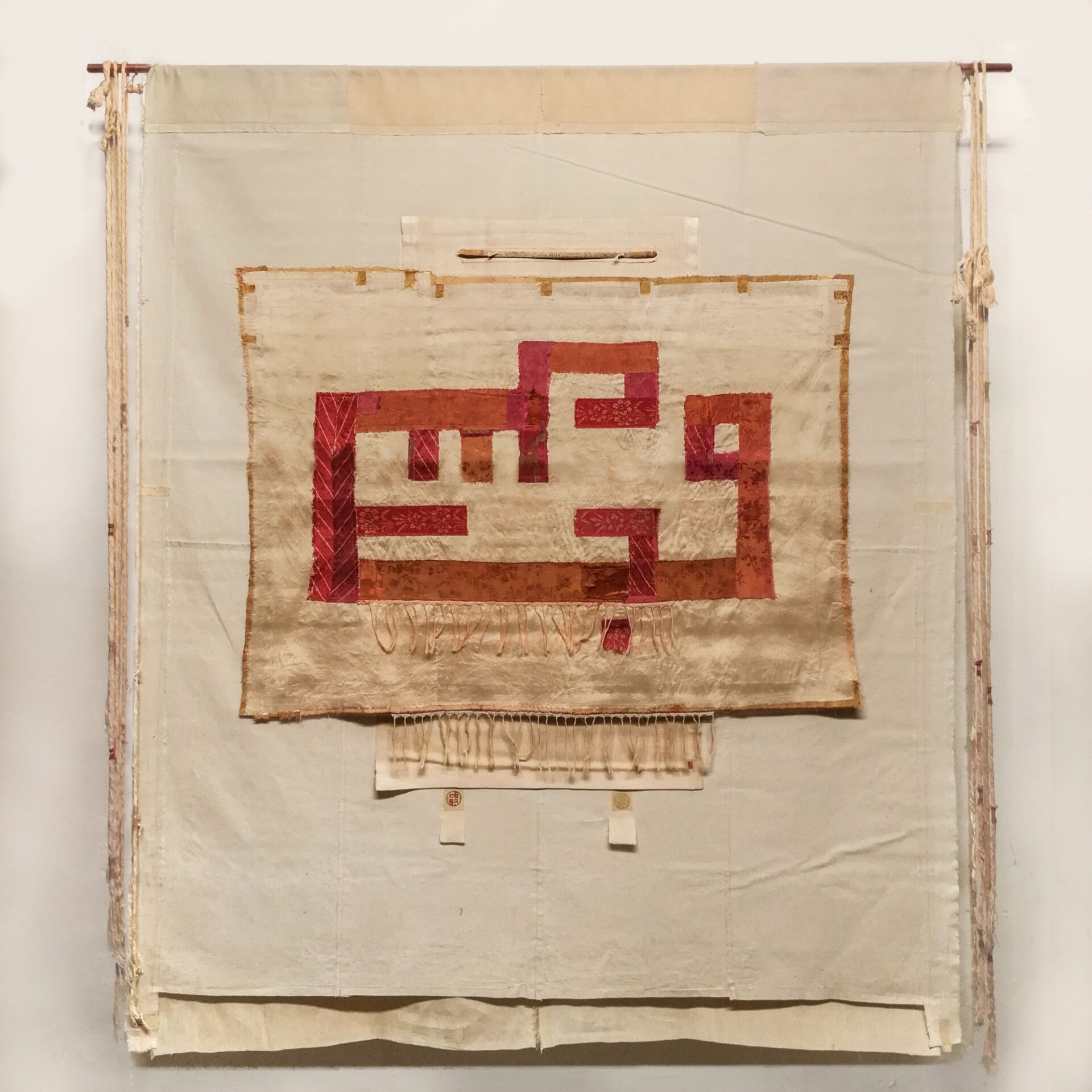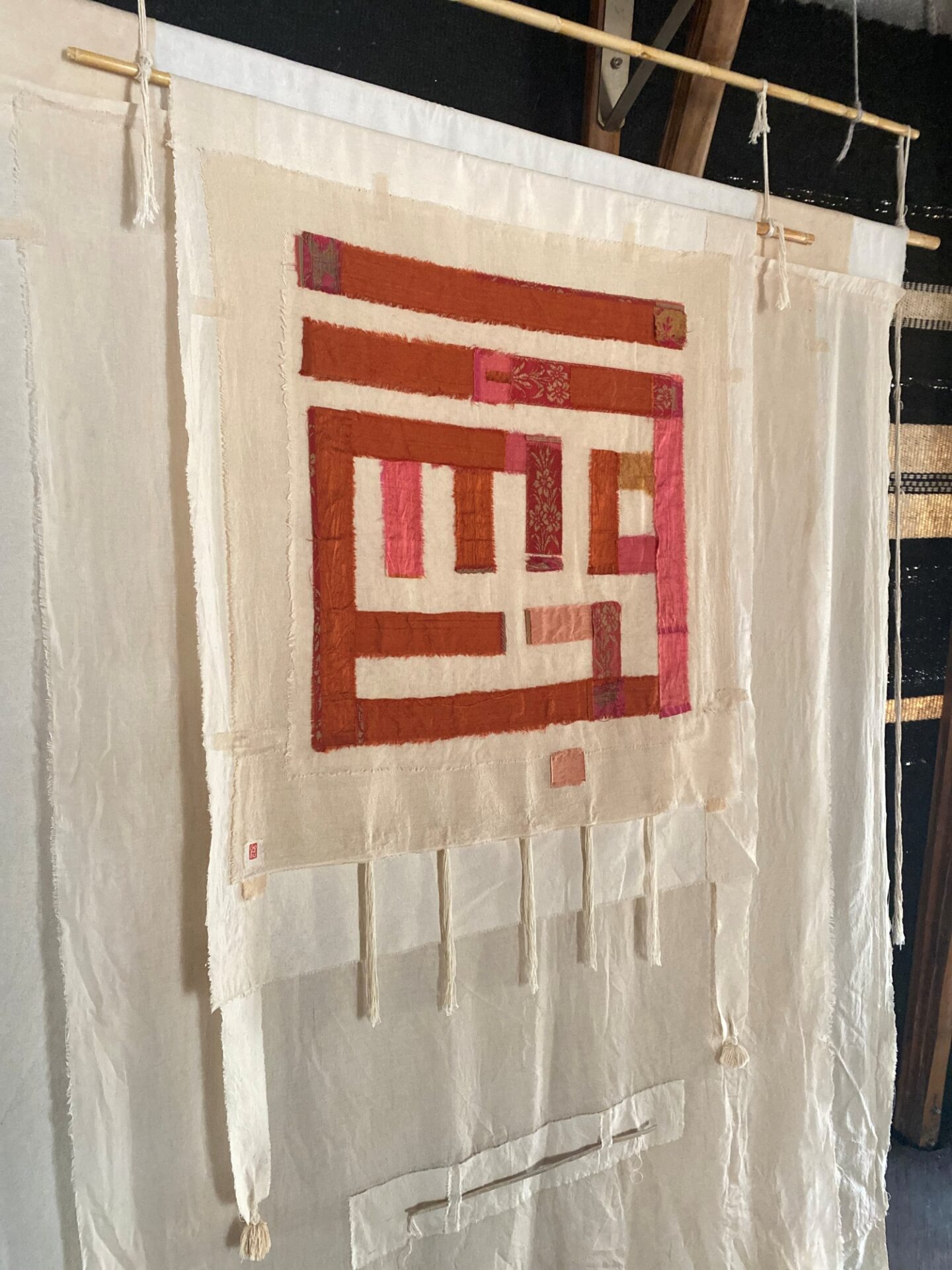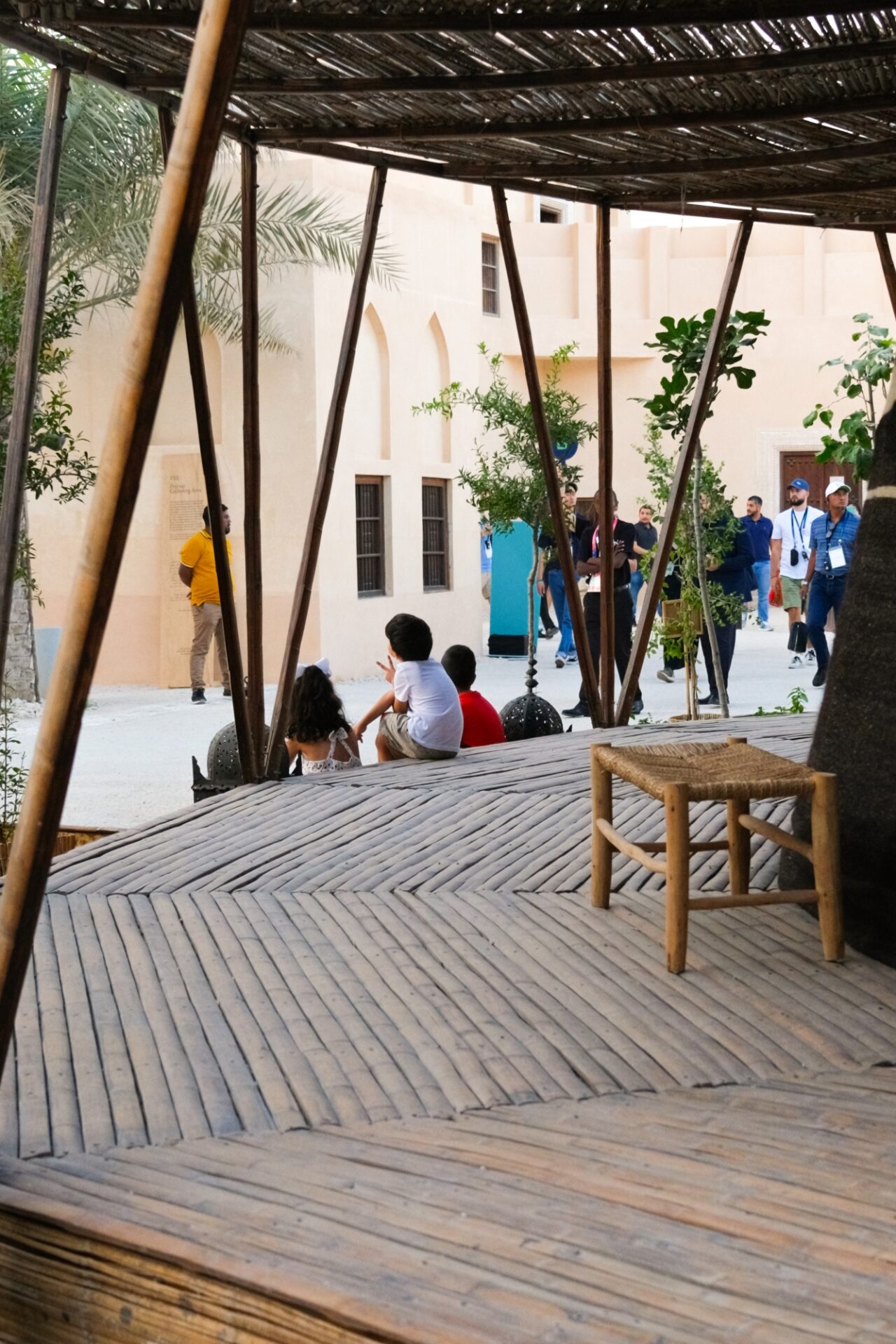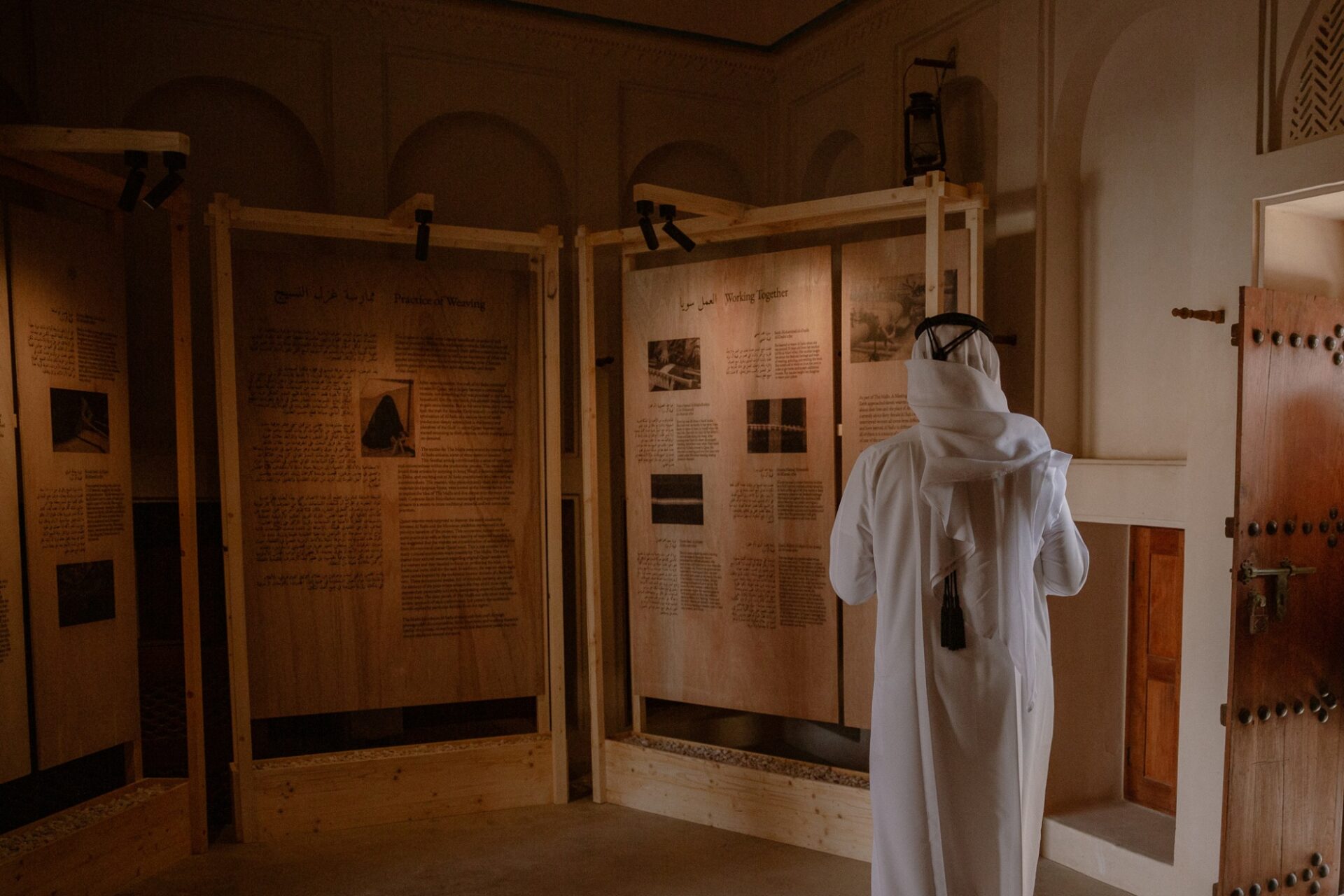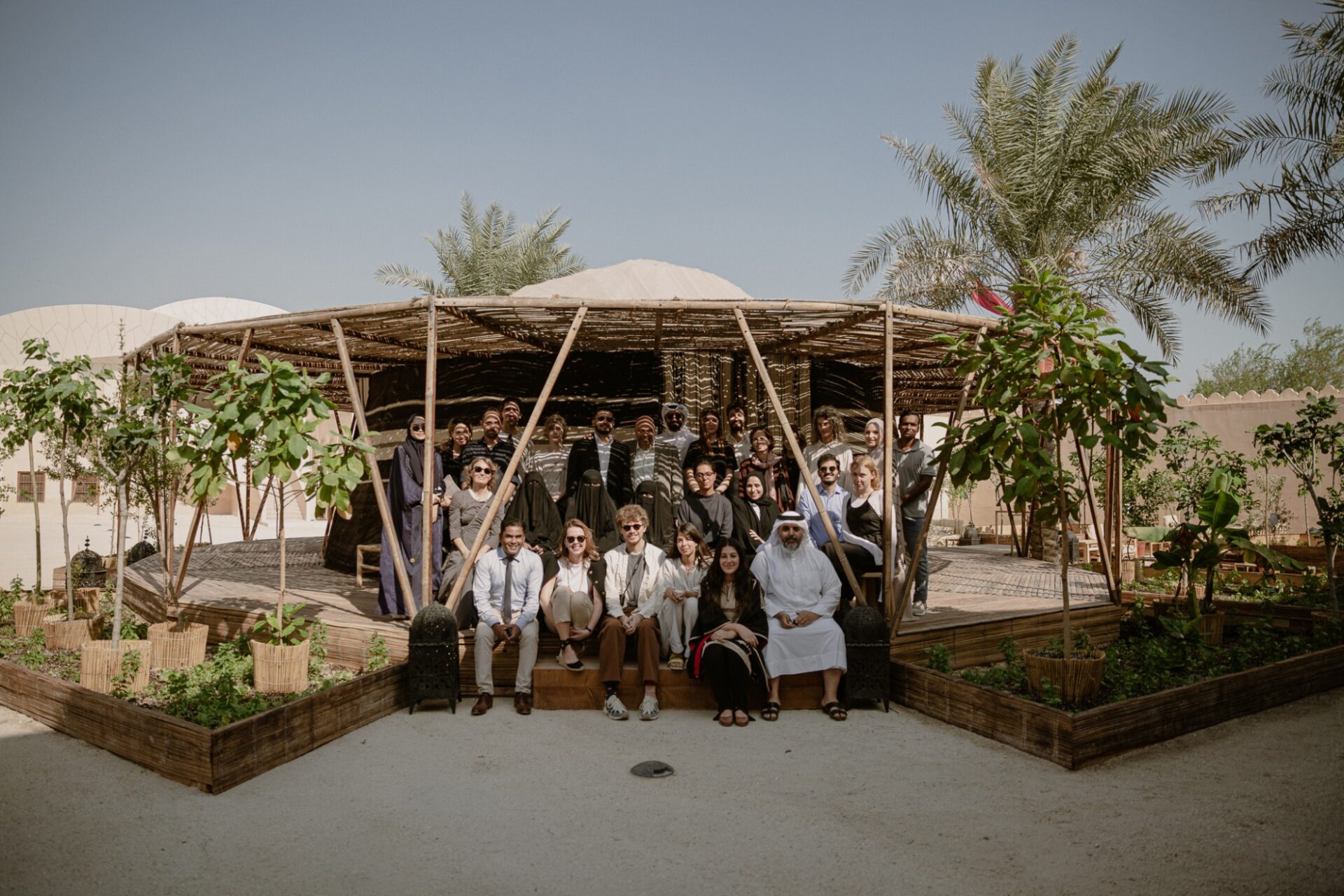The Majlis is Where We Meet
Nestled within the walls of the Old Palace grounds inside the National Museum of Qatar (NMoQ) is The Majlis: A Meeting Place, an exhibition that wishes to connect us to our past is ongoing till March 31st, 2023.
Entering the Majlis Project within the preserved beauty of the Old Palace grounds of the National Museum of Qatar (NMoQ) is like entering a pre-historic site. It takes us on a journey, with bamboo tent construction and the air of the natural materials, the earthy odour of bamboo and the yarns, spinning us through a time machine that takes us back to a different era.
The Majlis is a multi-layered project that was first unveiled in 2021 at the Venice Architecture Biennale. Majlis is a word that originated in Pre-Islamic Arabia, meaning “council” or “gathering place.” Traditionally, a majlis is a place where people come together to discuss local events and issues, exchange news, socialise, and deepen their connection with each other. The Majlis was inscribed on UNESCO’s list of Intangible Cultural Heritage (ICH) in 2015 as ‘a cultural and social space’. UNESCO’s list aims to ensure better protection of important intangible cultural heritages worldwide and the awareness of their significance.
The Majlis was initially conceived as an experiment in collaboration between a variety of participants from different cultures and backgrounds who shared similar values and passions. Inspired by nomadic architecture, The Majlis structure was designed by the internationally acclaimed bamboo architects Simón Velez and Stefana Simic.
“The origins of this first instalment of The Mailis were the result of practical research into how we can synchronise our intentions, efforts, policies, and practices to live together in peace with one another and with nature,” say the organisors.
The travelling exhibition held in the compound of the Old Palace at the Qatar National Museum features multiple components, including sections dedicated to the origins of the Majlis structure that has become part of history. The Majlis constructed in a bamboo-textile construction is also designed by architects Simón Vélez and Stefana Simić.
All the components of the exhibition frame the idea of the meeting place-a place where the human and the natural, the material and the spiritual, the timeless and the momentary, intersect. The Majlis banner executed in square kufic script by Greek interdisciplinary artist Irini Gonou honours the desert and the healing power of the written word.
This is a particular style of Arabic script from the 8th century AD that was widely used in architecture. The purity, austerity, and simplicity if the script reveals its timeless beauty. In her work the artist explores the beauty, the protective power, and the healing properties of art in modern societies.
The interior carpets and rugs were hand-produced by the Ain Leuh Women’s Weaving Cooperative from Morocco. The idea and design were developed by Nina Mohammad-Galbert, the Creative Director at Artisan Project, and the textiles were woven by three women from the Ain Leuh Women’s Weaving Cooperative: Khadaouj Ouchkek, Hachmia El Douiri, and Khadija El Aabdi. The collection of carpets is titles The Story of Yan and its four movement each represent the different moods of the weaver and their different songs, establishing the connection between the viewer and the women who create the beautiful textiles., A selection of antique weaving tools used by Moroccan artisans and household items symbolic of the Bedouin culture are also exhibited.
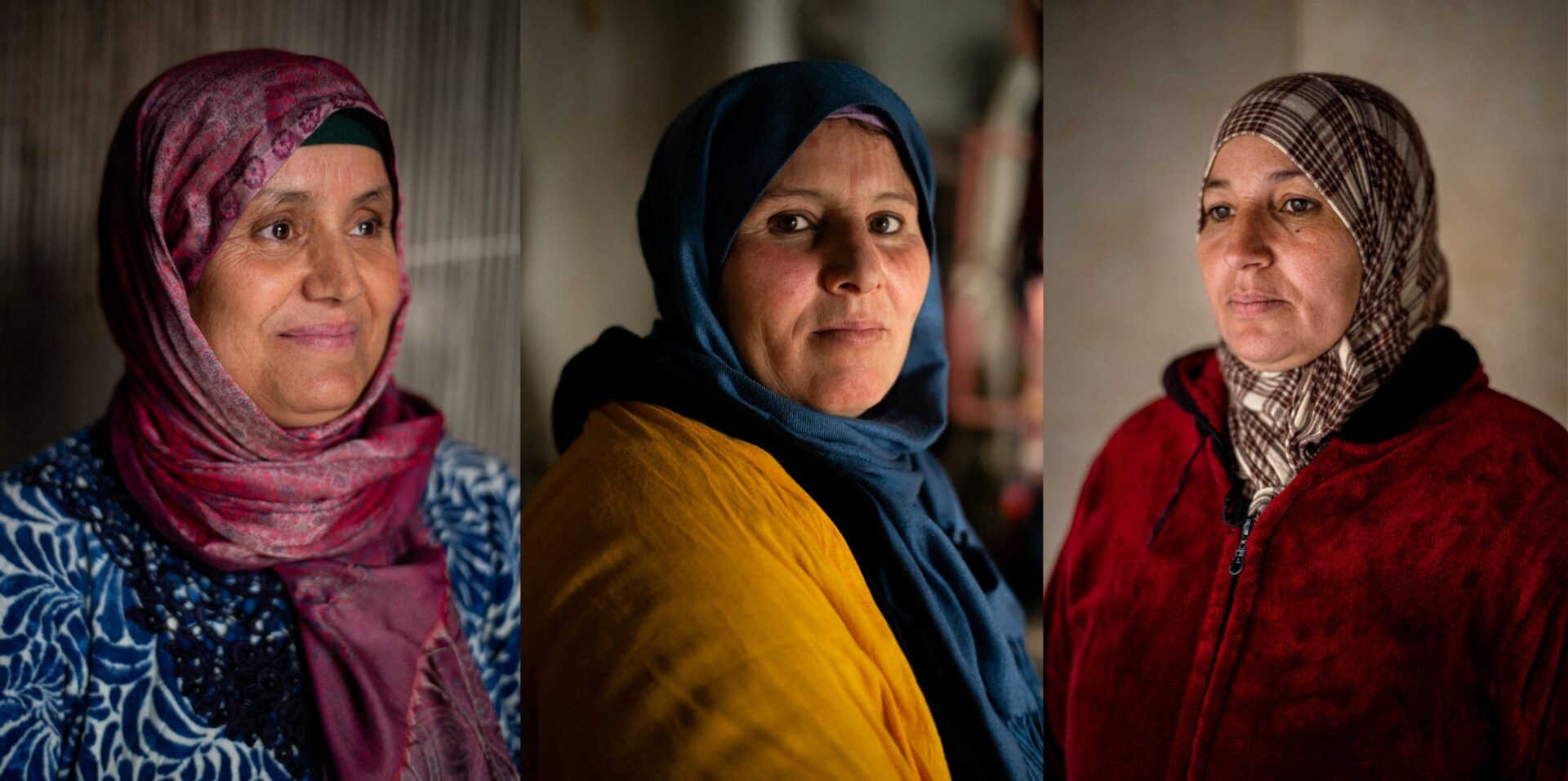
Fatima Cimiti, Mina Amrani, and Khadija El-Aroussi all took part in the production of textiles the Majlis with the use of ancient craft techniques adapted for today’s use
Al Sadu weavers produced over 360 square metres of textiles for the walls, doors, and roof of the construction as well as eight special symbolic rugs — two for each entrance.
The exhibition is an invitation to explore the numerous dimensions of what The Majlis stands for: as a possibility to meet, as a hospitable location, as a tradition open for reinventions, as an intersection between material care and spiritual evolution that enables each within it.
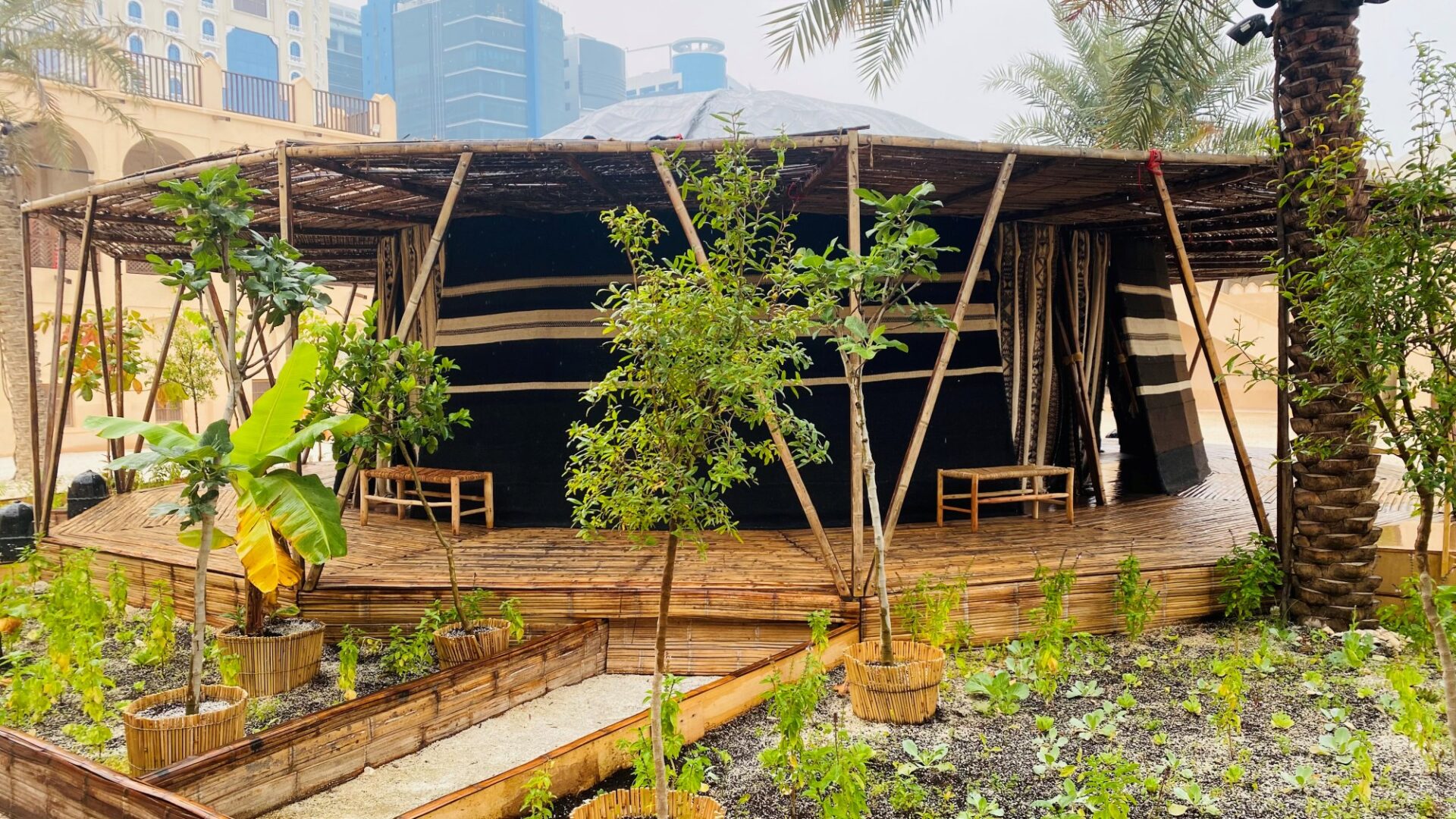 In keeping with what is now a tradition for The Majlis project, there is a garden full of a variety of plants that showcase the diverse beauty of Qatar’s flora.
In keeping with what is now a tradition for The Majlis project, there is a garden full of a variety of plants that showcase the diverse beauty of Qatar’s flora.
Another highlight is the involvement of Qatari weavers who practise the local tradition of Al-Sadu weaving. These Al-Sadu weavers used their knowledge of the indigenous craft to produce textile walls for the Majlis. In order to support and empower Qatari Bedouin women, the craft practices will be documented and presented carefully. The exhibition highlights the importance of local identity and traditions related to this region. Al Sadu is a horizontal weaving style: it features ancient geometric patterns that echo colours and shapes of the desert. Caravane Foundation is conducting extensive research and documentation of the craft with the aim of preserving it for the future generations.
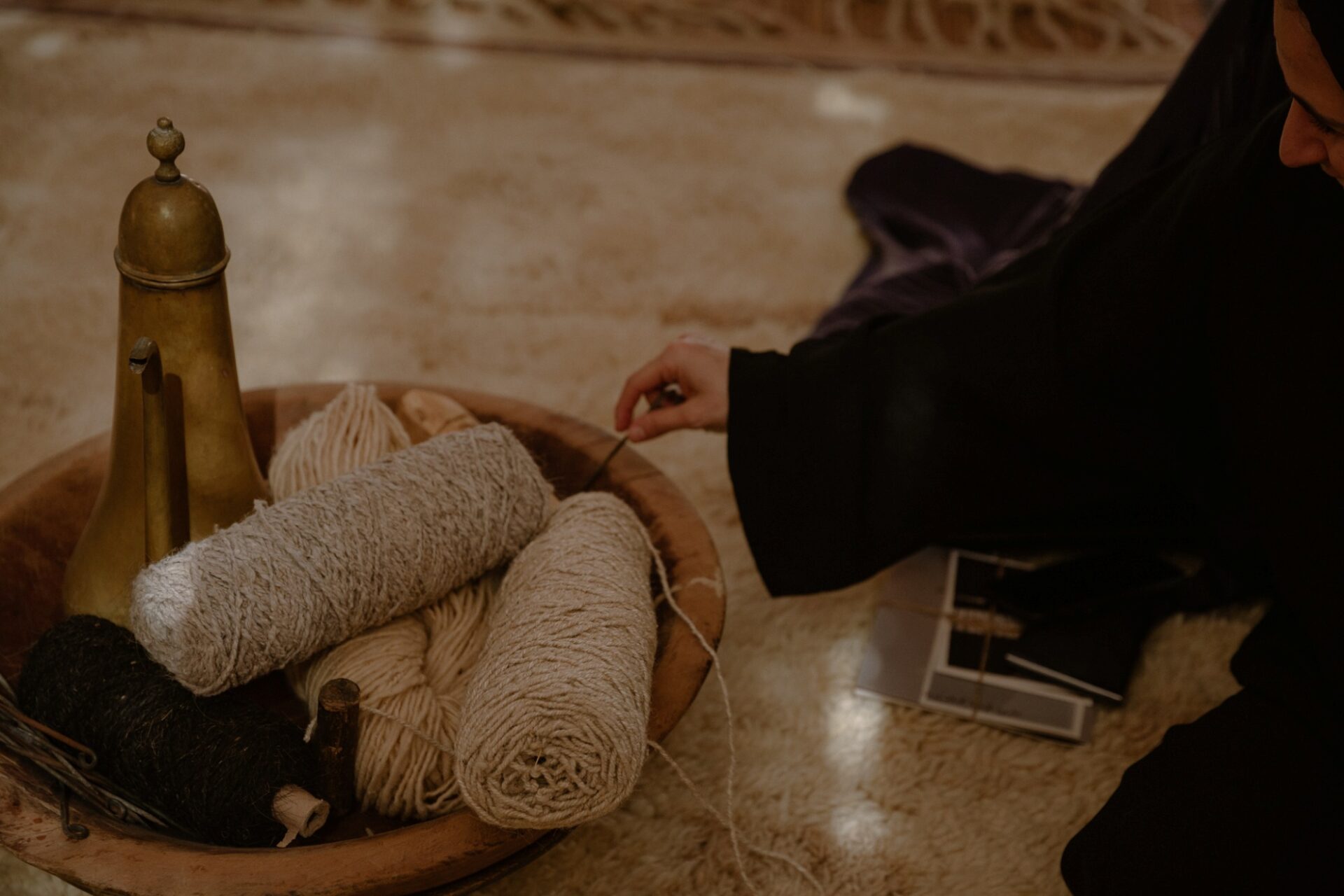 One of the central parts of The Majlis exhibition is Al Sadu textiles produced by Qatari Bedouin weavers. This process was documented carefully and was part of broader research focused on this craft in the context of Qatar.
One of the central parts of The Majlis exhibition is Al Sadu textiles produced by Qatari Bedouin weavers. This process was documented carefully and was part of broader research focused on this craft in the context of Qatar.
Another part of The Majlis exhibition is a series of photos by Jörg Gruber that document the different forms of labour that were involved in realizing the project.
The Majlis is an ongoing experiment in the actual practice of living and working together. It brings together academics, architects, artists, craftspeople, policy makers, and thinkers from all over the world. They are all implementing tangible steps towards preserving cultural heritage, passing on the knowledge of traditional crafts and architecture, maintaining ecological balance, developing intercultural dialogue, and decolonizing the work of cultural institutions. The contributions of the Heenat Salma Creative Residency have helped to make the exhibition a place for both interaction and participation. Through the Al Sadu studio, visitors to the exhibition are given the chance to learn about this important tradition.
Heenat Salma Creative Residency features a special artist residency programme for motivated, aspiring individuals working in the field of traditional crafts and art. An important aspect of the residency is the creation and support of communities focused on horizontal connections and intercultural dialogue. The residency refers to a decolonial approach in their activities based on mutual respect and ethical values, such as ethical production and the professional integrity of community relations. The residency’s communication and collaboration with Al Sadu weavers has been a focal point of The Majlis in Qatar. The organisation has been helping to support the communities of weavers and to preserve the tradition of Al Sadu as a form of intangible cultural heritage.
The Majlis is surrounded by a garden that brings together herbs and edible plants mentioned in the Quran, twenty different kinds of palms, and Sidra trees, which are known as emblematic plants of Qatar. All the plants in the garden come from the Heenat Salma Farm and the soil they grow in has been specially prepared with the use of local organic compost.
The goals of the exhibition according to Caravane Earth is to increase the sense of belonging and pride of cultural heritage for all Qatari residents, as well as celebrating Qatar identity, by showcasing and promoting the traditional cultural life of Qatar. Also to empowerment and be an income generation for Qatari residents, especially young local talents and craftswomen, through the development of the crafts economy through local value chains.
Caravane Earth Foundation is based in the Netherlands with a mission to seed, practice, and promote ethical entrepreneurship and wellbeing through art, craft, architecture, agriculture, and education.


